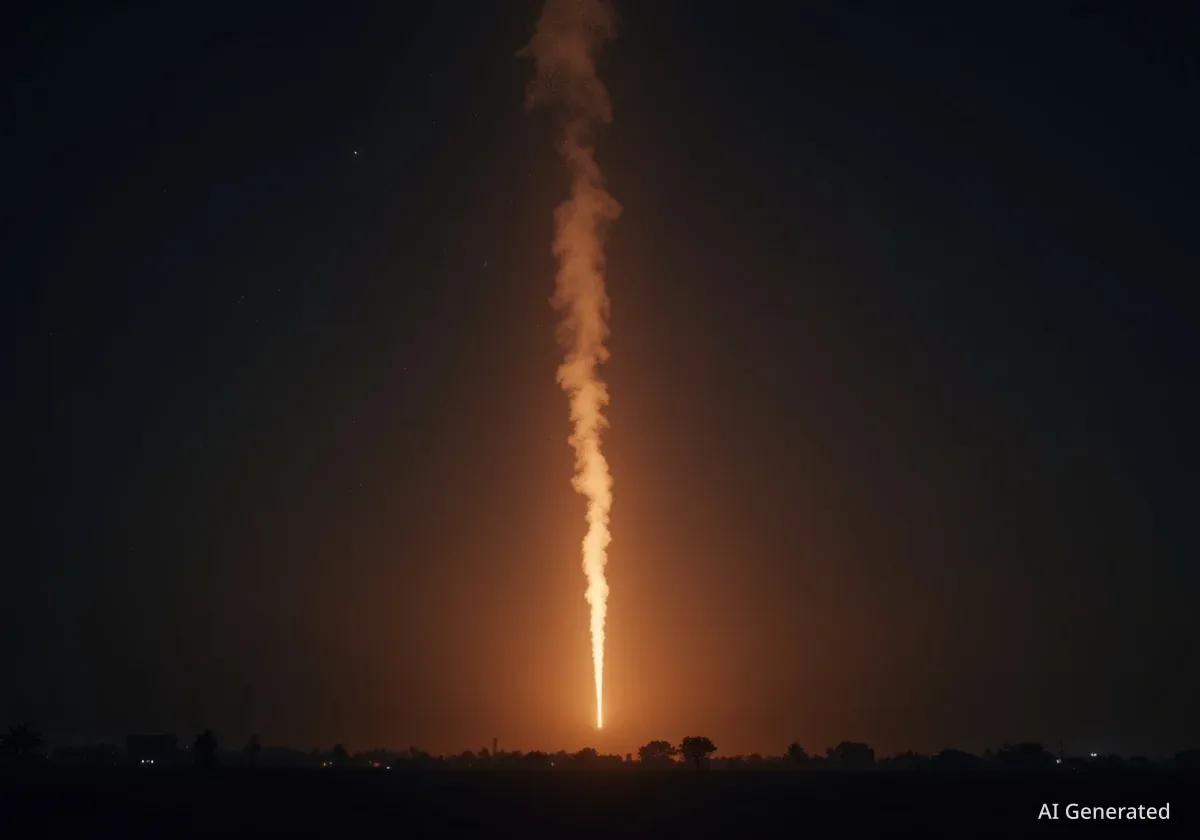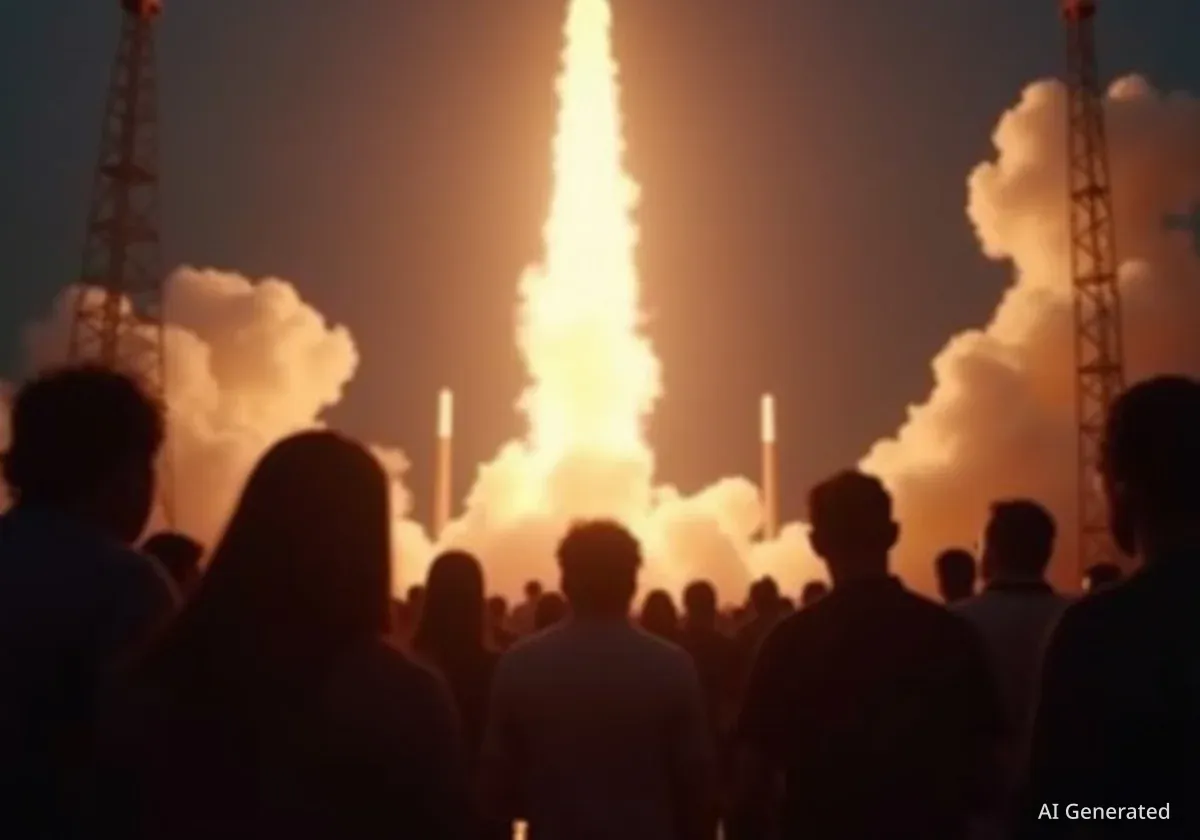A spectacular light show in the skies above Delhi, Gurugram, and other northern Indian cities on September 20, 2025, was likely caused by the reentry of a Chinese rocket body. The event, initially mistaken for a meteor shower by some observers, produced a bright, slow-moving fireball that broke into multiple fragments before disappearing.
The object appeared around 1:20 AM local time and was visible across a wide area. Based on its trajectory and the timing of its appearance, experts believe it was the upper stage of a Long March 3B rocket, designated CZ-3B R/B, which had been in orbit for exactly one year.
Key Takeaways
- A bright, fragmenting fireball was observed over northern India around 1:20 AM IST on September 20, 2025.
- The event was likely the reentry of a Chinese Long March 3B rocket body (NORAD ID 61188).
- The timing of the sighting matched the reentry prediction window provided by The Aerospace Corporation.
- Characteristics such as slow speed and fragmentation are consistent with space debris, not a natural meteor.
- No ground debris has been reported, suggesting the object completely burned up in the atmosphere.
Widespread Sightings Across Urban Centers
Residents in a densely populated corridor of northern India were treated to an unexpected celestial display in the early hours of Saturday, September 20. The event occurred between 1:20 AM and 1:30 AM Indian Standard Time (19:50–20:00 UTC, September 19).
Eyewitness reports and video recordings emerged from numerous cities, including Delhi, Gurugram, Noida, Ghaziabad, Faridabad, Dwarka, and Aligarh. Social media platforms were quickly filled with footage showing a bright object traversing the night sky, shedding smaller incandescent pieces as it moved.
Initial confusion led many to label the phenomenon a meteor. However, space tracking experts and astronomers quickly pointed out characteristics inconsistent with a natural bolide. The object's relatively slow velocity and prolonged visibility pointed toward an artificial object disintegrating upon reentry into Earth's atmosphere.
Identifying the Source: A Chinese Rocket Stage
The leading candidate for the object is the rocket body from a Chinese Long March 3B launch vehicle, identified by its NORAD ID 61188 and international designator 2024-168D. This piece of space debris was the upper stage of the rocket used to launch the Beidou-3 M25 and Beidou-3 M27 navigation satellites.
The launch took place exactly one year prior to the reentry, on September 19, 2024, from the Xichang Satellite Launch Center in China. After deploying its payload, the rocket stage remained in a decaying low-Earth orbit.
Reentry Prediction Accuracy
The Aerospace Corporation, a leading organization in tracking orbital debris, had forecast the reentry of CZ-3B R/B. Their prediction placed the event at 16:45 UTC on September 19, with a margin of error of ± 4 hours. The observed fireball over India, at approximately 19:50 UTC, fell squarely within this predicted window, making the identification highly probable.
The Science of Reentry Breakup
When an object like a rocket stage reenters the atmosphere, it experiences immense heat and pressure. Traveling at hypersonic speeds, the friction with air molecules heats the object to thousands of degrees Celsius, causing it to glow brightly.
The structural integrity of the object fails under these extreme forces, leading to a process called fragmentation. This is what observers on the ground saw as the main fireball breaking into multiple smaller, glowing pieces. This breakup process is a key visual signature that helps distinguish man-made debris from a solid, natural meteoroid.
The Growing Challenge of Space Debris
This event over India serves as a visible reminder of the growing issue of orbital debris. Thousands of defunct satellites, spent rocket stages, and fragments from past collisions currently orbit the Earth. While most of this "space junk" is small, larger pieces like the CZ-3B rocket body pose a potential, albeit very low, risk.
What is Space Debris?
Space debris, or space junk, refers to any man-made object in orbit around Earth that no longer serves a useful purpose. This includes everything from old rocket stages and non-functional satellites to tiny flecks of paint and metal shards. According to the European Space Agency (ESA), there are over 36,500 pieces of debris larger than 10 cm currently being tracked.
Uncontrolled reentries like this one happen several times a year. Fortunately, the vast majority of Earth's surface is covered by oceans or is sparsely populated. Because of this, the statistical probability of debris causing harm to people or property on the ground remains extremely low.
Most objects are designed to, or happen to, burn up completely at high altitudes. No fragments from the September 20 event have been found, indicating a full disintegration miles above the ground. Events over major metropolitan areas, however, are rare and provide valuable data for organizations that model and track the decay of orbital objects.
Official Confirmation and Public Reaction
As of this report, an official confirmation linking the fireball to the CZ-3B R/B rocket body has not been issued by Indian authorities or international space agencies. However, the circumstantial evidence, particularly the timing and visual characteristics, makes it the most logical explanation.
The public reaction was a mix of awe, excitement, and initial concern. Videos posted online were often accompanied by titles questioning whether the object was a meteor, a UFO, or rocket debris. The event provided a unique educational opportunity for science communicators to explain the dynamics of orbital mechanics and the lifecycle of objects we send into space.
While the light show was harmless, it highlights the increasing traffic in low-Earth orbit. As more satellites are launched, managing the orbital environment and mitigating the risks associated with reentry will become an even greater priority for the international space community.





